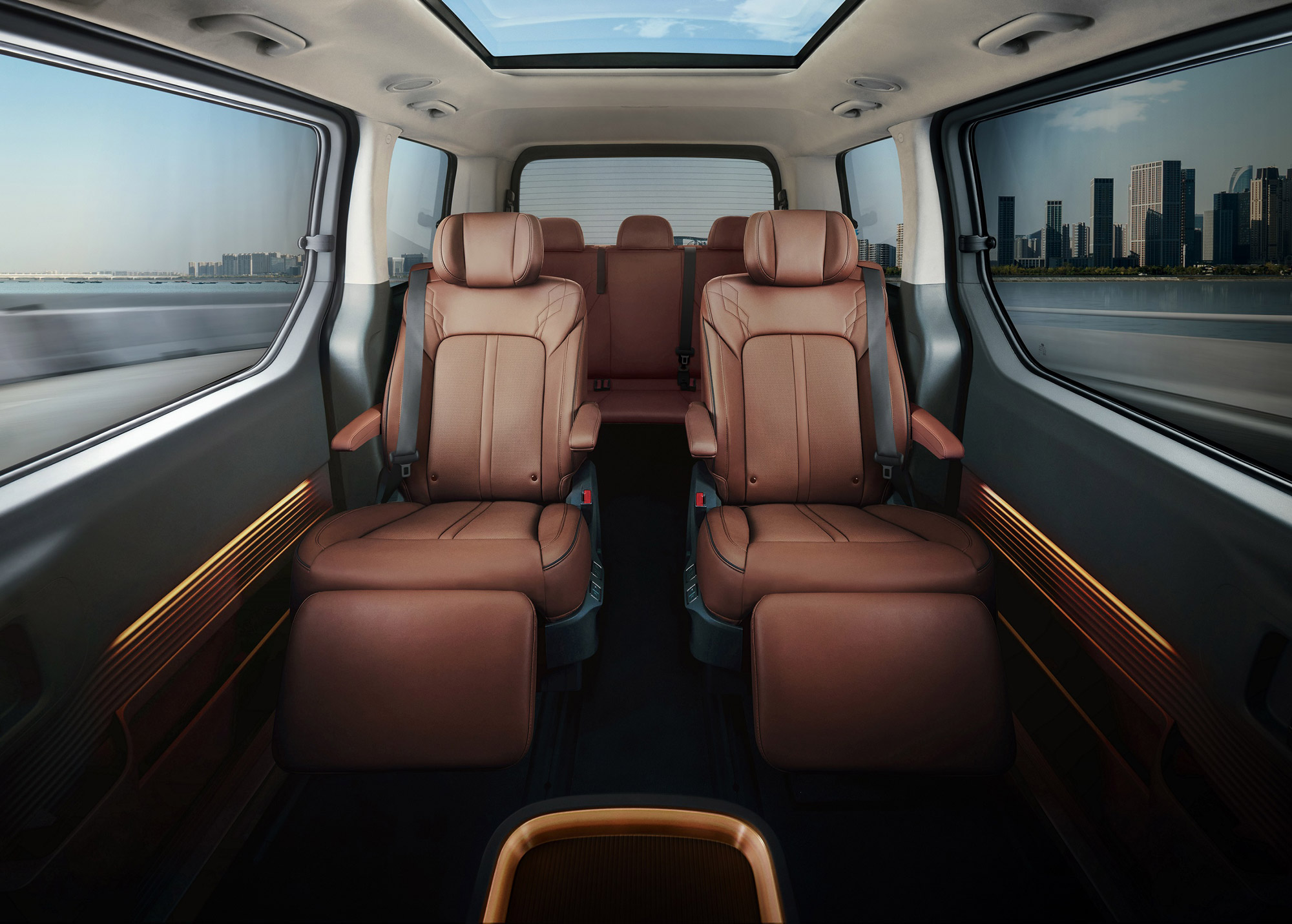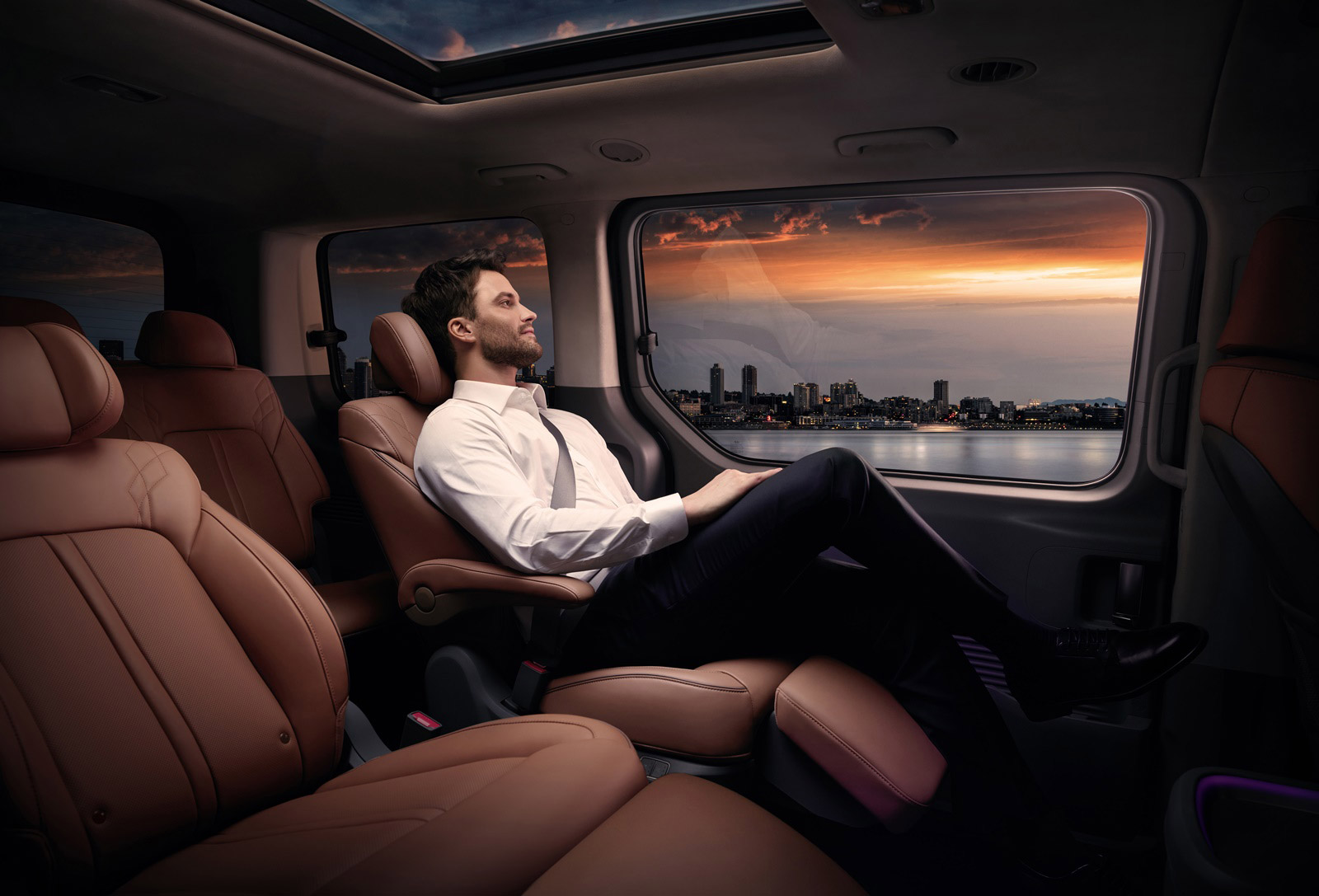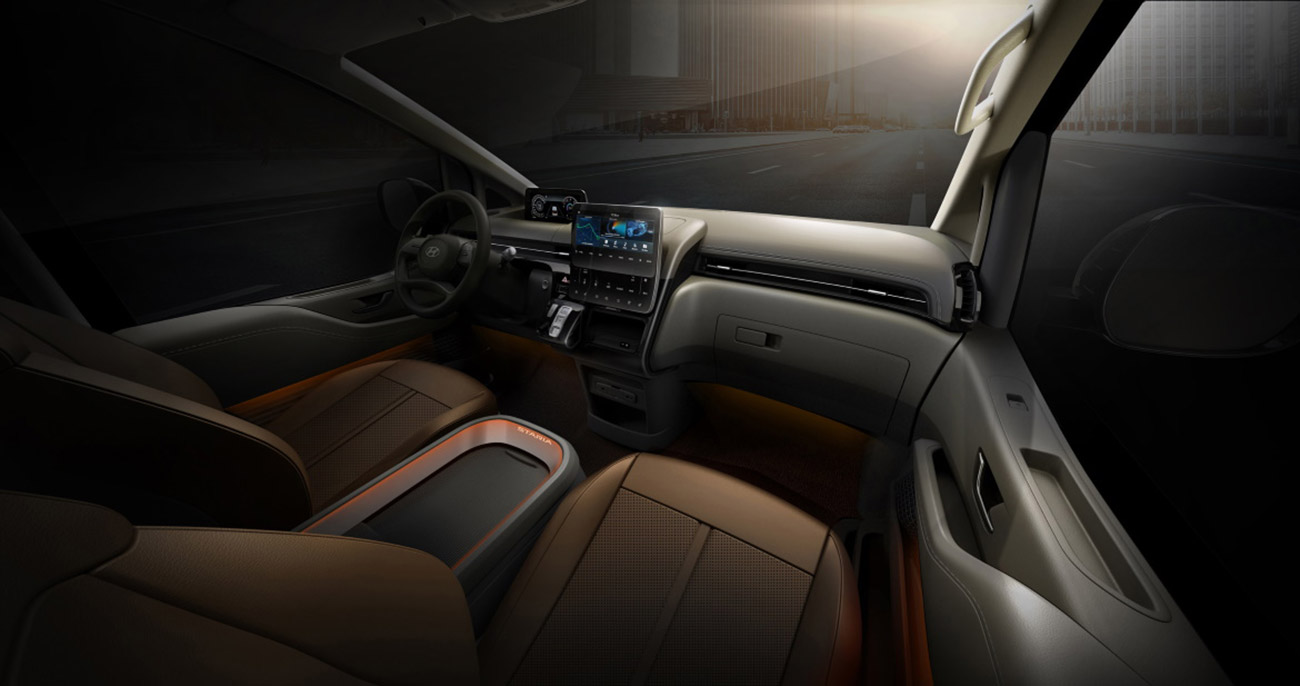The Hyundai Staria Van Only Looks Futuristic, And That's Fine
We, you and everyone else fell in love with the Hyundai Staria when it was teased in shadowy renders back in March. It marked another design win for an automaker that has racked up quite a few of them in recent months, from its retro-futuristic Ioniq 5 EV to the sleek, pebble-like Prophecy concept.
Today, Hyundai followed up the Staria's initial reveal with full details on its van, or MPV if you can't stomach that description. Of course, the Staria still looks fantastic, and we're still not getting it here in the States. But what sticks out to me is that underneath that very forward-looking exterior, this van is still propelled by tiny explosions.
When the Staria launches in "select markets" in Europe and Asia in the second half of this year, it'll debut with a 2.2-liter, 175-horsepower turbodiesel optionally mated to a six-speed manual or eight-speed auto. A 3.5-liter, 268-HP gas engine will also be on offer, but not in Europe. Beyond that, Hyundai says it plans to add "eco-friendly variants in the coming years," though there's no word on what those will entail yet. Hydrogen fuel cell and plug-in hybrid models may be in the cards, according to Electrive.
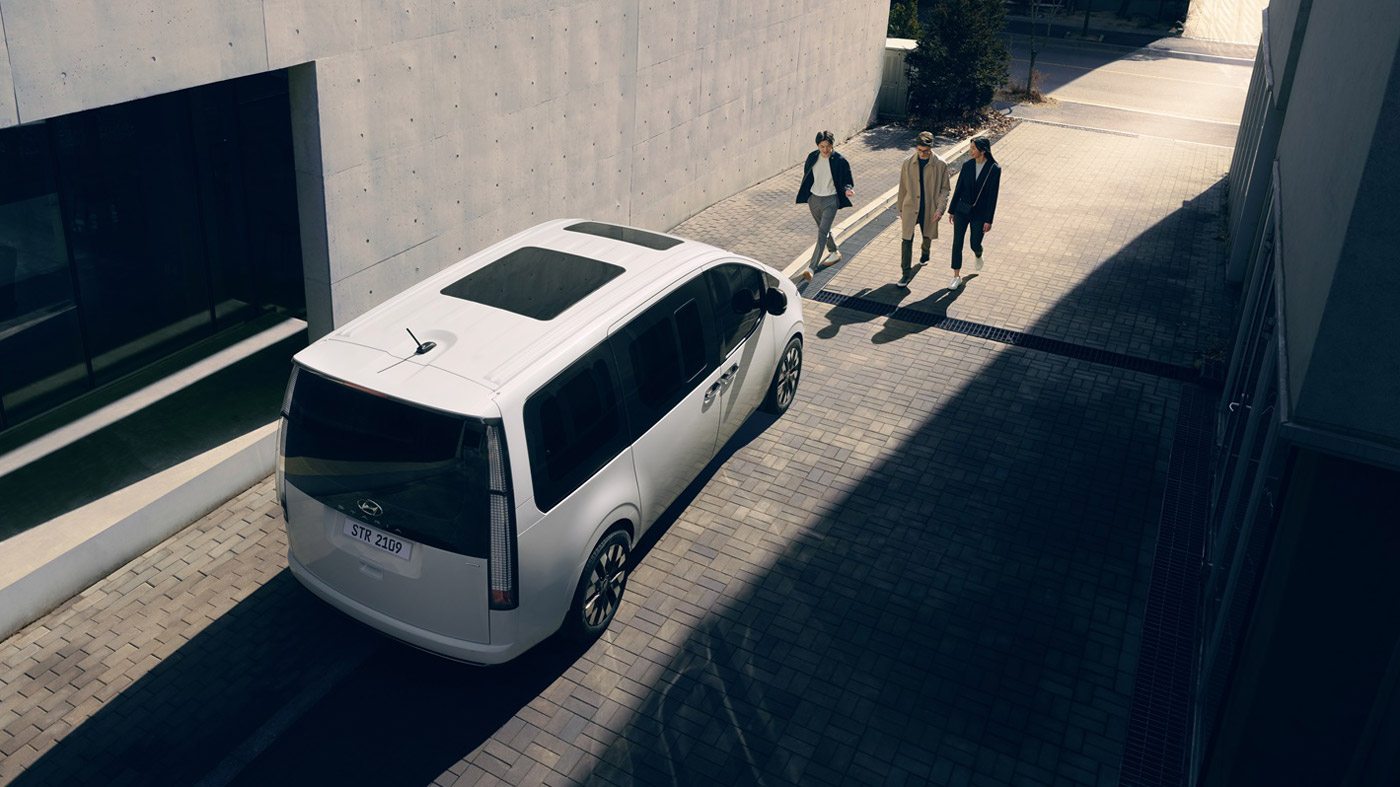
Mind, I'm not complaining about this, but it's interesting how Hyundai has lifted cues from its next-gen EVs — especially the Ioniq 5 — and placed them in a conventionally powered van. The Staria has the very same "parametric pixel" design to its taillights as that all-electric crossover has, and the open greenhouse, unmissable front lightbar and soft, seamless surfacing really sells the whole spaceship on wheels aesthetic.
It's a far cry from the likes of the Honda Odyssey and Toyota Sienna we're so used to seeing on this side of the pond — planet-sized people movers with obnoxious gaping maws, frivolous creases and angular haunches. Those vans try so desperately to be aggressive, sporty, and soothe the egos of those who can't bear to be perceived behind the wheel of a minivan, and they look so much worse for it. The Staria's exterior has clearly evolved beyond that pointless game, which is why it's somewhat surprising its powertrain hasn't.
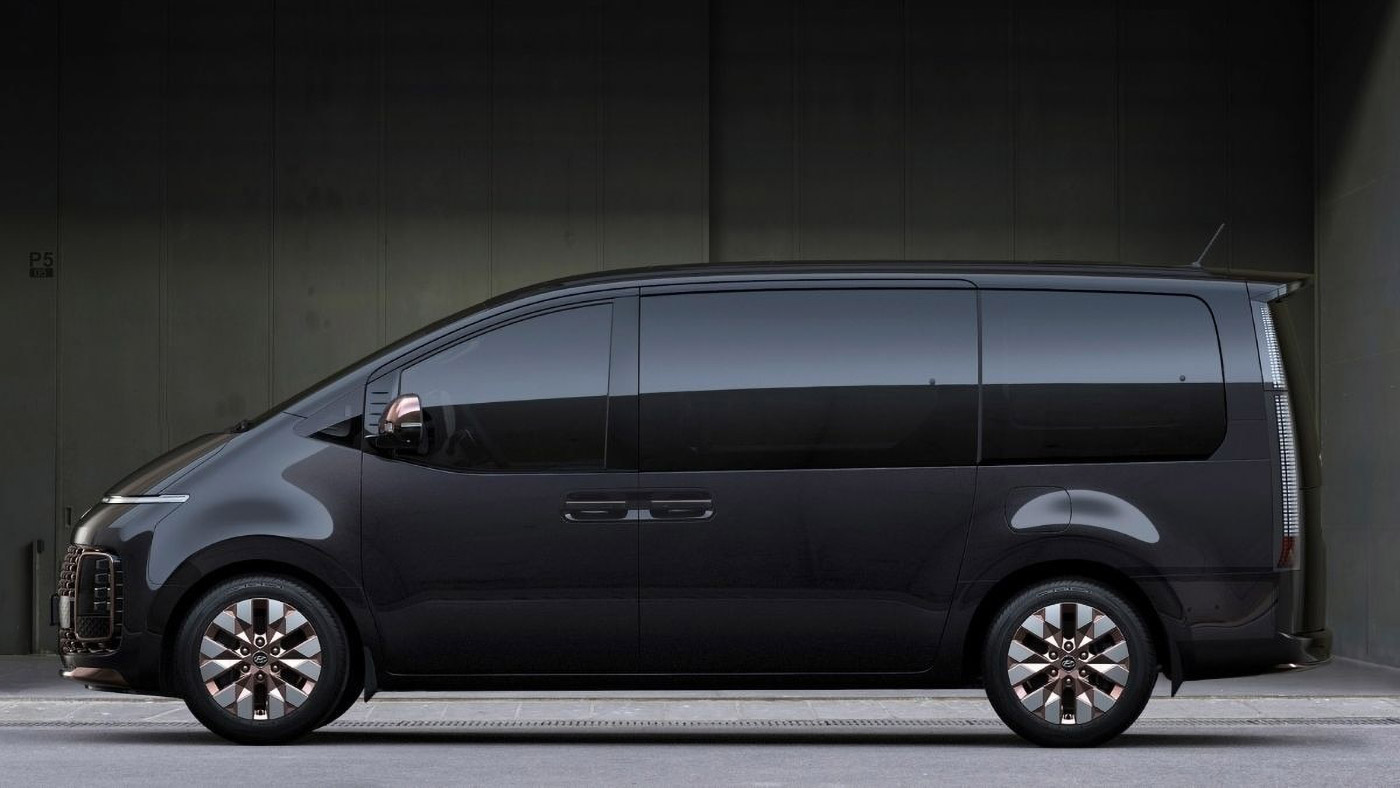
The big window and low belt line make the Staria appear quite small in images, even though it's actually pretty spacious. It measures 207 inches long, 78.6 inches wide and 78.3 inches tall. For reference, the latest Sienna is 204 inches long, 78.5 inches wide and 68.5 inches tall.
Inside, there's less to say. The Staria will be offered in configurations that can sit anywhere from two to 11 people, in both standard and Premium guises. If you opt for the 9-seat Premium version, the second-row seats can swivel 180 degrees to face passengers in the third row. In the 7-seat version, those seats don't swivel, but they do recline and move backwards and forwards electronically.
A 64-color "ambient mood lamp" envelops the cabin, bathing the inside of the doors and trim with subtle light that at least looks pretty good in these renders. Though not all Starias will be that fancy; in time, Hyundai expects to churn out purpose-built versions, to serve as ambulances, limousines and campers.
